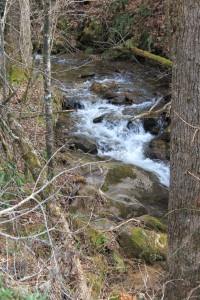A team of Western Carolina University students teamed up with the Jackson County Health Department and the Watershed Association of the Tuckasegee River to monitor the quality of nearby creeks.
WCU professor Tracy Zontek teaches a course on water quality every fall under the environmental health program. Last semester Zontek’s students began to monitor various sites along Cane Creek, located just outside of campus off Old Cullowhee Road, with the help of the Jackson County Health Department.
“The Jackson County Health Department is a tremendous supporter of the WCU environmental health program,” said Zontek.
The health department has not only taken interns from the program but also provided multiple lectures in the past.
“It’s a great way to, in a nutshell, have students from the water quality class gain perspective and understanding of what it’s like for a local health department person,” said registered environmental health specialist Jonathan Fouts.
In October Zontek’s students began working with the health department to monitor and evaluate Cane Creek for potential contaminants. Tests performed during the process were based off of the Hach methods. Results were then compared to the EPA’s standards and guidelines for drinking water.
“The hands-on experience was fun and I liked the fact that all possible contaminants were tested,” said student James Kukat.
Students in groups of four were assigned one or two areas to monitor. The students checked levels the levels of:
- PH
- Phosphate
- Fecal coliform
- Turbidity
- Hardness
- Nitrates
- Dissolved oxygen
Test results fell within the safe range under EPA guidelines.
The overall low amount of phosphate even suggests community members are using fertilizers with little phosphates, if not none at all.
With fecal coliform contamination becoming an issue in Scotts Creek, students began to work with both JCHD and WATR to complete monitoring, said Zontek. Kukat confirmed trace amounts of fecal coliform has been found in Cane Creek, possibly from animal waste and phosphorous from fertilizers used at the Christmas tree farm.
While the studies found most levels of contaminants were within the EPA’s guidelines, water still should not be taken from Cane Creek without treatment. Wells should instead draw their water from groundwater, said Zontek.
The report published by the students outlines several ways to decrease the impact on Cane Creek. Ideas include:
- Pick up after pets
- Reduce the use of fertilizers
- Pump septic tanks ever three to five years
- Refrain from dumping oil, grease, organics and paints
- Use erosion control properly
The report compiled by the students was presented at the Mountain Environmental Health meeting in Franklin.
“It gave us a chance to see what they [JCHD] do on a daily basis,” said student Kayla Branciforte.



